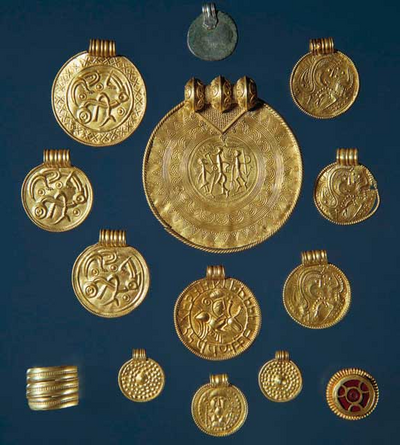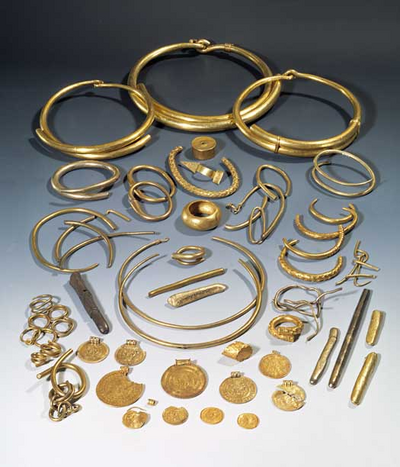Gold and silver treasure
The Iron Age settlement at Gudme on Funen has produced many remarkable hoards of treasure from the Late Roman and Early Germanic Iron Age. Archaeological excavations in the last 25 years have revealed that many gold and silver treasures were originally hidden in the farm buildings. Finds of craftsmen’s waste and metal scraps also show exactly where gold and silversmiths had their workshops. At one of the farms two complete treasure hoards were buried close to the posts of the house. One was an impressive hoard of gold bracteates, the other a bundle of gold neck rings and a piece of gold spiral.
At other locations at Gudme finds have included depositions of Roman silver coins, together with silver and bronze scrap in the form of cut-up dishes and broken-off pieces of Roman statues. This contact with the Roman Empire and the importation of its products was the source of Gudme’s prosperity. Of the total of around 50 gold hoards from the Late Iron Age which have been found in Denmark, many have come from the Gudme area.


